
Seven years ago, in his inaugural address as president of Johns Hopkins University (JHU), Ronald Daniels emphasized that the university’s health and well-being are inextricably tied to Baltimore’s physical, social, and economic prosperity. Since then, in collaboration with other local stakeholders, Johns Hopkins has taken deliberate, strategic actions to strengthen its ties to the community. While JHU had long been a significant contributor to the city’s economic, educational, medical, and cultural scene, the strategic imperative brought better focus and a sense of priority, says Tom Lewis, vice president of government and community affairs at Johns Hopkins. “In recent years, we’ve been much more conscious about making a long-term commitment to and impact on the community,” he notes.
Many other colleges and universities have experienced a similar epiphany, creating offices or strategic objectives that promote and support community engagement. In the process, the institutional mindset has moved from simply providing service or assistance to the community to partnering with the community on mutually beneficial initiatives.
“We don’t have near the town-and-gown concerns that we used to, because we’re making a concerted effort to work with the city,” says Ben Crutcher, associate vice president of auxiliary services at the University of Kentucky. “It’s good for everybody to work together—the students then understand they’re not just here to attend the university, but also become part of the Lexington community.”
Here’s how several institutions demonstrate their value to the communities in which they are located.
Home Sweet Home
For 108 years, Ranken Technical College has prepared the next-generation workforce for employment in and near St. Louis. During that time, while the neighboring area changed dramatically, the college remained an economic and social anchor of the city’s northern section.
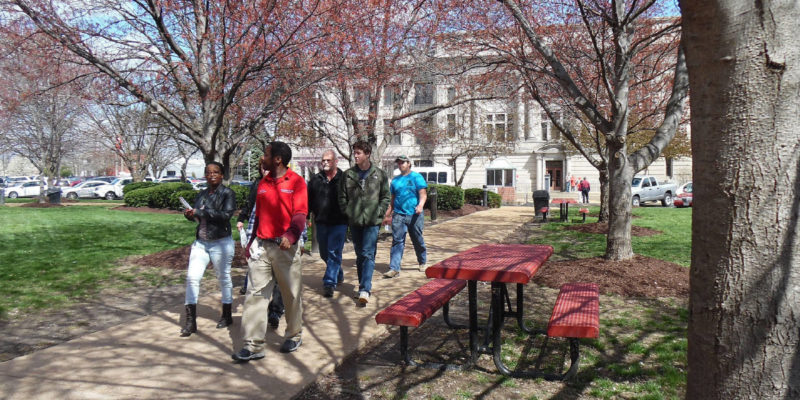
“It used to be somewhat of a depressed, even dangerous, area,” says Peter Murtaugh, Ranken’s vice president for finance and administration. “While there are still blighted parts, things have changed a lot—primarily because of how we have aided the community.”
For instance, Ranken students used to build one house—and then tear down another—every semester as part of their technical training. Decades ago, using its operating budget, the college started buying nearby lots from the city and to date has built about 60 three-bedroom houses, with garages, for sale. “We lose money on the houses, but we look at them as a lab for our carpentry, plumbing, electrical, and HVAC students,” says Murtaugh, who also serves as president of Ranken Community Development Corp. the college’s homebuilding subsidiary. Designs for the houses come from the college’s architectural program.
Each “Ranken house” typically costs $160,000 to build, including the expenses of removing existing debris and structures, and sells for approximately $120,000. Four years ago, city officials asked Ranken to concentrate its home-building efforts on one street, so in time the college will have replaced a block of dilapidated buildings with a new residential neighborhood.
To further beautify the area, Ranken’s board has authorized purchases of numerous parcels in a former industrial zone. “We buy the land, tear down the dilapidated buildings, clean up any toxic parts, and plant trees and grass—and then we continue to maintain those areas,” says Murtaugh. He estimates the college has spent millions acquiring land and meeting EPA requirements alone.
Not everything is destined for the wrecking ball, however. A few years ago, to maintain the neighborhood’s historical style and value, Ranken purchased and rehabbed an abandoned dairy; the former loading dock now serves as an auditorium, while the old warehouse was transformed into a 200-bed dormitory. Some residents of the dormitory can’t afford to pay for room and board and would otherwise be homeless, so the college supports those students until they can complete their training and become employed.
Murtaugh notes that the college has built a close relationship with St. Louis school officials, which has led to a dual-enrollment program for students in economically challenged areas. Seniors can attend Ranken for a free semester of technical training, right before they graduate from high school, which gives them a head start on a certificate or degree program. “We have a staff member who checks in with these students, to make sure that they’re showing up for class and not struggling, and reports back to the schools,” says Murtaugh. “About 90 percent of the participants usually finish the program.”
More than city officials have taken notice of Ranken’s community-enhancement efforts. “The locals see us in a positive light, and new developers—who haven’t touched our area before—are now coming in,” Murtaugh reports. “We feel like we started a trend.”
For City and State
As a land-grant institution with a full range of professional schools, a trauma hospital, and a medical center, the University of Kentucky (UK) has a built-in mission to serve its home state. Fulfilling that mission takes the form of providing an agricultural agent in each of Kentucky’s 120 counties and having dental students provide free dental care to children in poverty-stricken coal-mining towns. A food-purchasing program through Aramark supports the economy by giving priority to local farmers’ products. UK’s success on the football field and basketball court translates into community outreach as well, with athletic victories boosting both statewide pride and civic coffers.
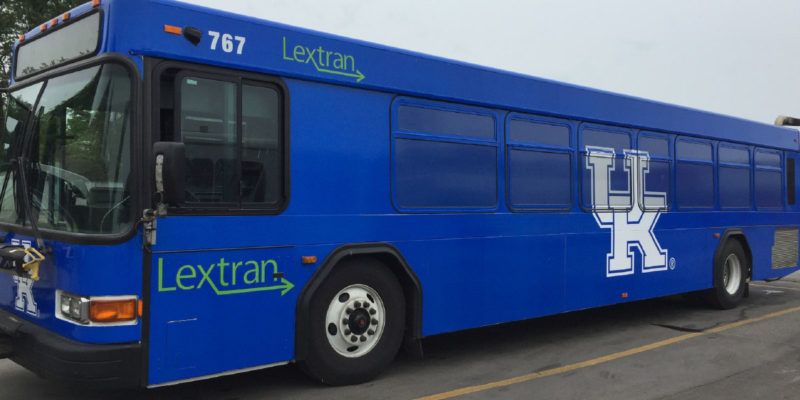
Within Lexington itself, UK has partnered with the local bus service to provide free, unlimited transportation to its 35,000 students in exchange for a per-student fee. “It’s difficult for transit systems to be profitable on their own, so we help sustain the one in Lexington,” notes Ben Crutcher. “That enables the city to serve many areas where economic conditions aren’t the best and people rely on mass transit to get to their jobs.”
When the university decided to build a new residence hall, Lexington’s fire department became the first beneficiary. Crutcher explains, “We turned over the old building to them to use as a training tool. New recruits spent a couple of weeks learning how to fight fires in a real building that was going to be demolished anyway.”
UK is currently in its fifth year of a $450 million building boom that has employed construction workers from all over Kentucky and even neighboring states. “The economic impact on the city and the citizens of Kentucky, from that project alone, is staggering,” Crutcher reports. “It’s not just students who are benefitting from the new facilities, but also the families of workers who have full employment.”
Steering an Economic Engine
Including its health system and the university itself, which have interlocking boards, Johns Hopkins is Maryland’s largest private employer. About 40 percent of Johns Hopkins’ 36,000 employees reside in Baltimore, contributing taxes to a city that also benefits from the university’s research and administrative spending.
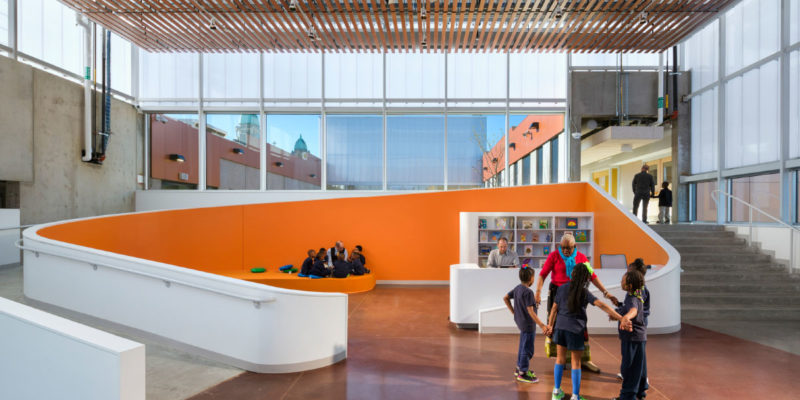
In 2015, to better leverage its economic power for Baltimore’s benefit, the university and health system launched HopkinsLocal—an institutionwide commitment to build, hire, and buy locally. Senior vice president for finance and administration, Daniel Ennis, along with the vice presidents of facilities and real estate, human resources, and procurement, developed the process for identifying the goals by which Johns Hopkins could improve and track the results. Those goals include:
- Having local, minority-owned, women-owned, and disadvantaged business enterprises represent 17 percent of construction contracts, increasing one percent per year to 20 percent. For many of its large construction projects, Hopkins now requires a first-option opportunity for local hiring in its agreements with general contractors.
- Ensuring 40 percent of new hires for targeted positions come from specific Baltimore neighborhoods—ZIP codes selected because of their high poverty or unemployment rates—over the next three years. “These are positions where it’s possible to hire without the need to conduct a national or international search,” JHU’s Tom Lewis notes.
- Increasing purchases from local businesses, with a focus on minority- and women-owned companies, by $6 million in specific purchasing categories over the next three years. “Traditionally, some of our purchasing contracts were too large for a small business in the city to bid on, so we now break down some into smaller contracts,” Lewis says.
- Developing plans with 24 non-local suppliers that outline how those suppliers will hire, procure, or invest in Baltimore over the next three years. For example, JHU works with a national provider to obtain certain products, such as recycled photocopier toners, that are manufactured in Baltimore.
Inspired by HopkinsLocal, 25 Baltimore- area businesses recently formed BLocal—a collaborative commitment to build, hire, invest, and buy locally, with a goal of spending $69 million over the next three years with local, minority-owned, and women-owned businesses. BLocal also established a “contractor college,” offering classes that help minority and local companies in the design and construction industries develop key competencies and build relationships.
Since 2004, JHU has invested or committed more than $50 million to revitalizing 88 acres adjacent to its medical campus. Other partners in the $1.6 billion mixed-use project include city, state, and federal agencies and local philanthropies. “When the project started, the area had a 70 percent vacancy rate and several problems associated with those vacancies,” Lewis says. Now known as Eager Park, the redeveloped area features commercial lab and office space—some leased by the university—500 completed rental units, and Henderson-Hopkins Elementary and Middle School.
The charter school, the first public school built in Baltimore in 20 years, draws students who have traditionally been underserved. “The goal was to help build the community, so first priority is given to students who live in the immediate area,” explains Lewis. “Hopkins helped raise the money and contributed about $10 million of its own to build the school and continues to provide an annual operating subsidy of about $750,000.” JHU’s school of education developed the curriculum and manages the K–8 school, with an emphasis on enhancing the health and well-being of each student’s family.
Within the next year, Eager Park will also have five acres of cultivated green space, a 15-story hotel, and 140 owner-occupied units. To encourage employees to purchase homes in certain neighborhoods near its campuses, Johns Hopkins substantially increased the size of the grants available through its Live Near Your Work program about five years ago. The results, says Lewis, have been positive for both employees and neighborhoods. For example, Hopkins employees who purchase a home in the Eager Park neighborhood could receive a $36,000 subsidy if they agree to live in the home for five years. Initially funded by a local foundation, the program was gradually built into the university’s budget as an employee benefit.
Small School, Big Influence
Given its location seven miles outside Greenville, S.C., Furman University could easily distance itself from the city’s inhabitants and urban challenges. Rather than remain insular, however, the university has launched several programs that affect local citizens as well as the entire state.
“We like to focus our community commitments in areas we’re either good at or really believe in, such as sustainability,” says Mary Lou Merkt, Furman’s vice president for finance and administration. The university’s Shi Center for Sustainability, for example, not only coordinates on-campus efforts to operate efficiently, but also sponsors a student conservation corps.

“Over the last six years, those students were able to winterize 100 homes in our city by installing insulation that brought a 30 percent savings in utility costs,” Merkt explains. “The families in those homes couldn’t afford to do the work on their own, nor were they even aware of what could be done to save money on utilities.”
At the county level, Furman offers Bridges to a Brighter Future, a program for high-potential high school students from households tending to have annual incomes below $25,000. Administered by the university’s continuing education department, the seven-year program brings 75 students to Furman’s campus each summer for four weeks, augmented by a one-day academic program each month throughout the school year. College-bound students spend one week at Furman preparing for life at college. Living on campus gives students a familiarity and feel for college life, as does the special programming, which covers topics such as completing a college application and applying for financial aid. Of the 335 students who have completed the Bridges program, 69 percent have graduated from college, compared to 11 percent of South Carolina residents who are also first-generation/low-income students.
Another campus entity, the Riley Institute, underscores Furman’s institutional commitments to public education and diversity. Since 2003, the institute has sponsored an annual diversity leadership program with an intensive curriculum based on case studies; it typically attracts corporate and nonprofit senior leaders from across the state.
Several years ago, the institute conducted 100 meetings around the state to ask parents, students, community leaders, and company presidents for ideas on improving South Carolina’s public schools. As a result, says Merkt, “Ten high schools were infused with a new curriculum that not only focuses on STEM but also the arts. The graduation and college placement rates for those schools soared to more than 90 percent.”
Noting that Furman is 70 percent dependent on tuition, she emphasizes the necessity of finding other sources of revenue to support community-based initiatives. The Riley Institute, for example, has its own endowment and has successfully applied for numerous grants. Merkt adds, “We also raised an endowment to fund the Bridges program. If we had more funds, we’d love to extend it down into the middle schools.”
Instruments of Service
“We are part of the fabric of Cincinnati. The city benefits from us, and we benefit from the city,” declares Peter Landgren, interim senior vice president for academic affairs and provost at the University of Cincinnati (UC). That mutually beneficial relationship is most evident in UC’s 110-year-old co-operative program, recently renamed as the Experience-based Learning and Career Education Division.
Three UC colleges require cooperative work experience for certain undergraduate degrees, with opportunities offered by 1,800 participating employers. Co-op students can earn more than $10,000 per semester working for companies as diverse as Procter & Gamble, General Electric, and Macy’s. “We offer a ready workforce between the ages of 18 and 23, and many businesses recruit directly from the co-op program,” says Landgren, adding that 65 percent of UC’s co-op placements are local. “We’re finding that many people decide to stay around Cincinnati after they graduate.”
Another UC initiative that attracts students to the city is a diversity fellowship program offered in partnership with the Cincinnati Symphony Orchestra. Funded by the Andrew W. Mellon Foundation, the program brings to UC’s College-Conservatory of Music (CCM) graduate students from populations that are historically underrepresented in classical music. The students not only receive free tuition but also spend five weeks per year as full-time performers with the city’s symphony orchestra—the oldest orchestra in Ohio and the sixth oldest in the nation.
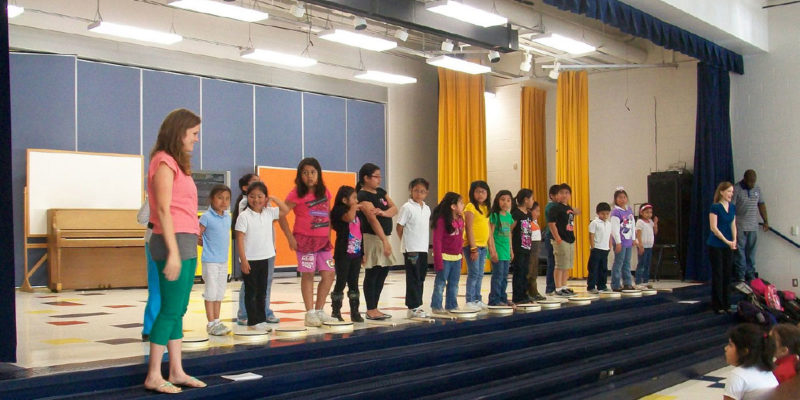
“One of the selling points for the foundation was the strong connection that already existed between the university and the symphony orchestra,” notes Landgren. For example, more than 20 of the orchestra’s full-time musicians serve on the university’s faculty, and the orchestra’s governing board includes UC representatives.
The arts also provided impetus for the Whiz Kids Music Program, which CCM launched in 2012 in partnership with Cincinnati’s City Gospel Mission. Conceived by UC alumni, the program brings music and theater activities into the City Gospel Mission’s after-school curriculum at underserved elementary schools; approximately 50 percent of Cincinnati’s public schools do not have music programs.
Local foundations provide funding for the Whiz Kids Music Program, which sends CCM students and recent alumni into Cincinnati elementary schools to teach the basics of rhythm, singing, instrumentation, and music appreciation. Since the after-school program began, says Landgren, “Attendance rates and test scores at those schools have been going up, and those higher rankings translate into more funding from the state.”
Similarly, student performance has improved at the public schools in which nearly 500 UC students serve as volunteer tutors. Through this Bearcat Buddies initiative, 60 percent of the elementary school students who participate experience a 10 percent gain in their reading and math skills.
Like many institutions, UC sponsors a day of volunteer service to the local community; in addition, its honors program requires a set amount of community service hours. Landgren notes, “Our students understand that getting a degree can provide a higher earned income and help them be successful in life—but they also learn part of that success is how you impact others.”
Multi-Institutional Collaboration
With nearly 14,000 employees and a payroll topping $1.5 billion annually, Washington University in St. Louis (WUSTL) is the third largest employer in the region. Its direct spending of more than $2 billion supports more than 41,000 jobs in the area. And, while the majority of the university’s 13,000 students hail from other states or countries, they spend an estimated $149 million at local businesses.
Those findings from the university’s 2014 economic impact study, however, don’t tell the entire story, says Hank Webber, WUSTL’s executive vice chancellor for administration. “An economic impact study is only one measure of value to the community,” he says. “It doesn’t capture the work in public schools or the access to cutting-edge medical care—or the fact that universities make their communities a little more interesting places to live.”
Through its Institute for School Partnership, for instance, WUSTL works with K–12 schools in the community to improve teaching and learning, particularly in STEM-related areas. The university also sponsors five charter schools in St. Louis, including the Hawthorn Leadership School for Girls. Opened in 2015 with the goal of encouraging young women from diverse backgrounds to excel academically, the single-sex, grades 6-12 school offers after-school tutoring and workshops provided by WUSTL student volunteers. The workshops introduce the younger girls to an array of extracurricular opportunities they might not otherwise experience.
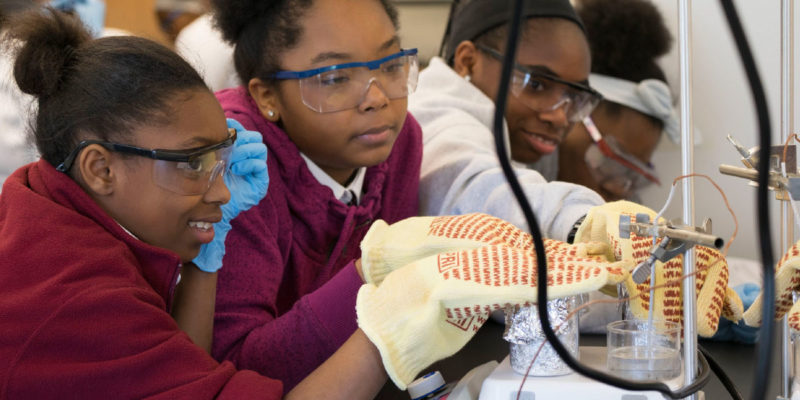
Perhaps WUSTL’s most significant undertaking to improve the community while also improving itself is the Cortex Innovation Community—200 acres in midtown St. Louis being transformed into a hub for technology and biomedicine. Twelve years ago the area had just a handful of industrial firms surrounded by abandoned buildings. With an eye toward redevelopment, WUSTL took the lead in creating a consortium with four other area institutions: Saint Louis University, the University of Missouri-St. Louis, the Missouri Botanical Garden, and BJC HealthCare. “Together we raised $29 million to redevelop existing buildings and build new ones. We also saw the need to develop residential housing, retail spaces, and a park,” says Webber, who serves as vice chair of the nonprofit Cortex board. The consortium had three overall goals:
- Develop a center for innovation to capitalize on the research done at local universities and attract tech entrepreneurs.
- Create a place where faculty from local institutions could commercialize their discoveries without leaving the city.
- Redevelop a decaying urban area that borders both the Washington University Medical School and Saint Louis University.
Today, with assistance from financial incentives provided by St. Louis and the state of Missouri, Cortex has attracted 250 employers that range from Fortune 500 companies to tech startups. It also includes several restaurants, and an IKEA store, and construction will soon start on a Cortex-branded metro station. St. Louis collects sales taxes and income taxes from the 4,100 people now employed within the area; at full build-out, Cortex aims to employ 13,000.
WUSTL, which contributed $15 million to the effort from central university sources, leases significant office space within Cortex. These investments have all had positive effects, says Webber. “Cortex has helped make St. Louis a technology center, has clearly been useful in recruiting and retaining faculty and attracting graduate students, and has improved the location of the medical school and our partnership hospitals,” he reports. “For many firms and young people, being in a diverse, urban area, between two universities and in close proximity to a large research base, is a formula for success.”
Despite these and countless other successes in contributing value to their local communities, higher education institutions seemingly fall short in one area: Communicating that value to the communities themselves.
“Most people in Greenville probably don’t know about all the Furman programs that provide services, improve education, and put economic value back into the community—maybe because we’re unnecessarily humble about them,” observes Mary Lou Merkt, who chaired NACUBO’s Value of Colleges and Universities Committee. “Often an institution has to go on the defensive when someone questions whether it’s a good citizen. It’s better to be in an offensive mode.”
UK’s Ben Crutcher agrees that improving public awareness of community value is critical, particularly during periods of state budget-cutting and highly publicized tuition increases. “How our institutions touch the community,” he says, “is probably the best-kept secret of higher education.”
SANDRA R. SABO, Mendota Heights, Minn., covers higher education business issues for Business Officer.



